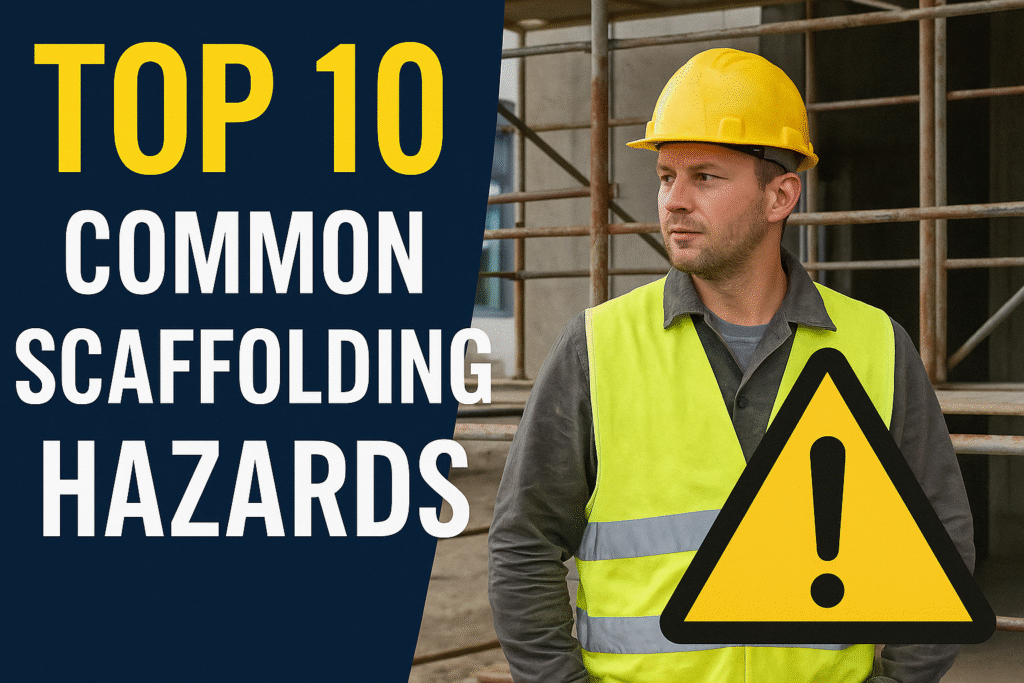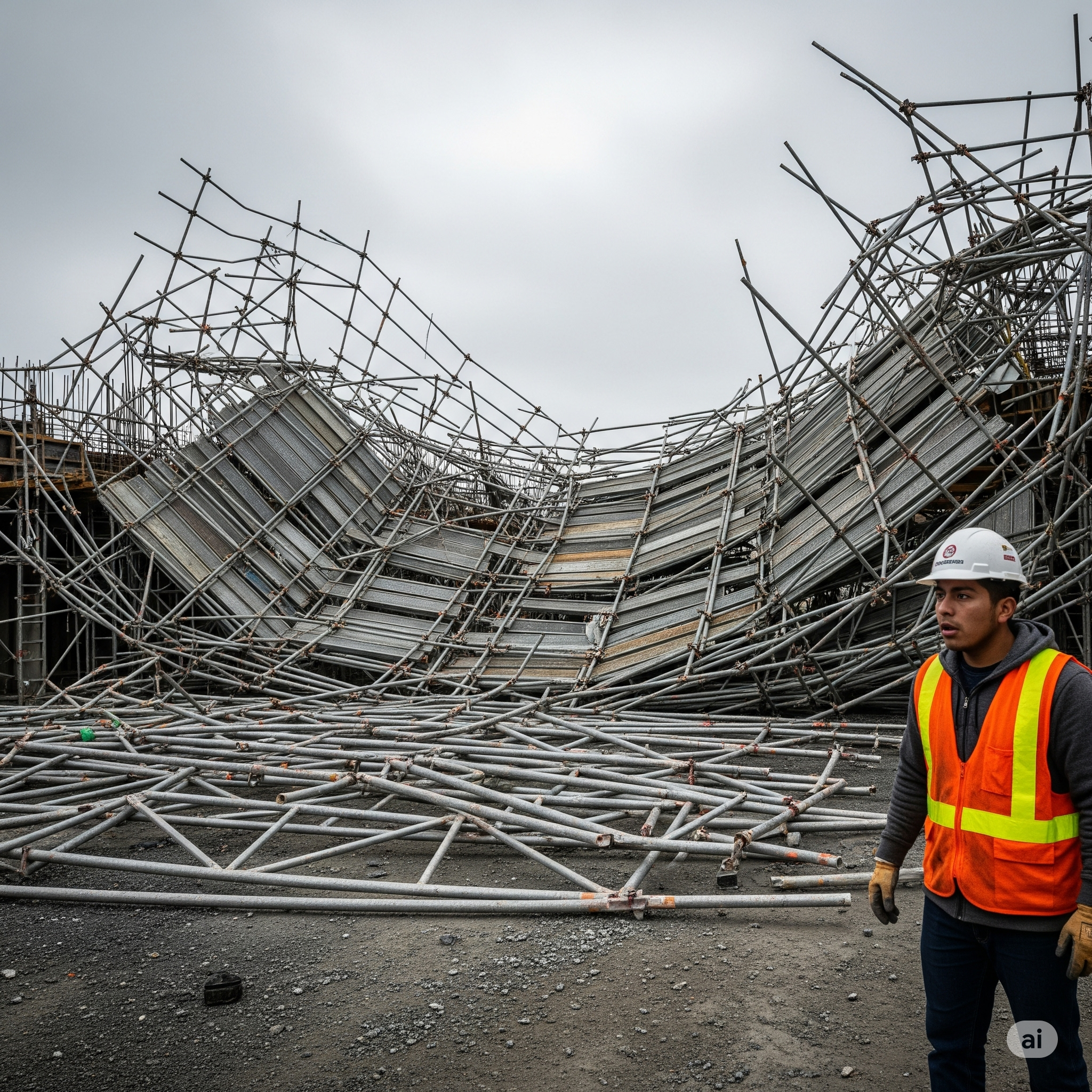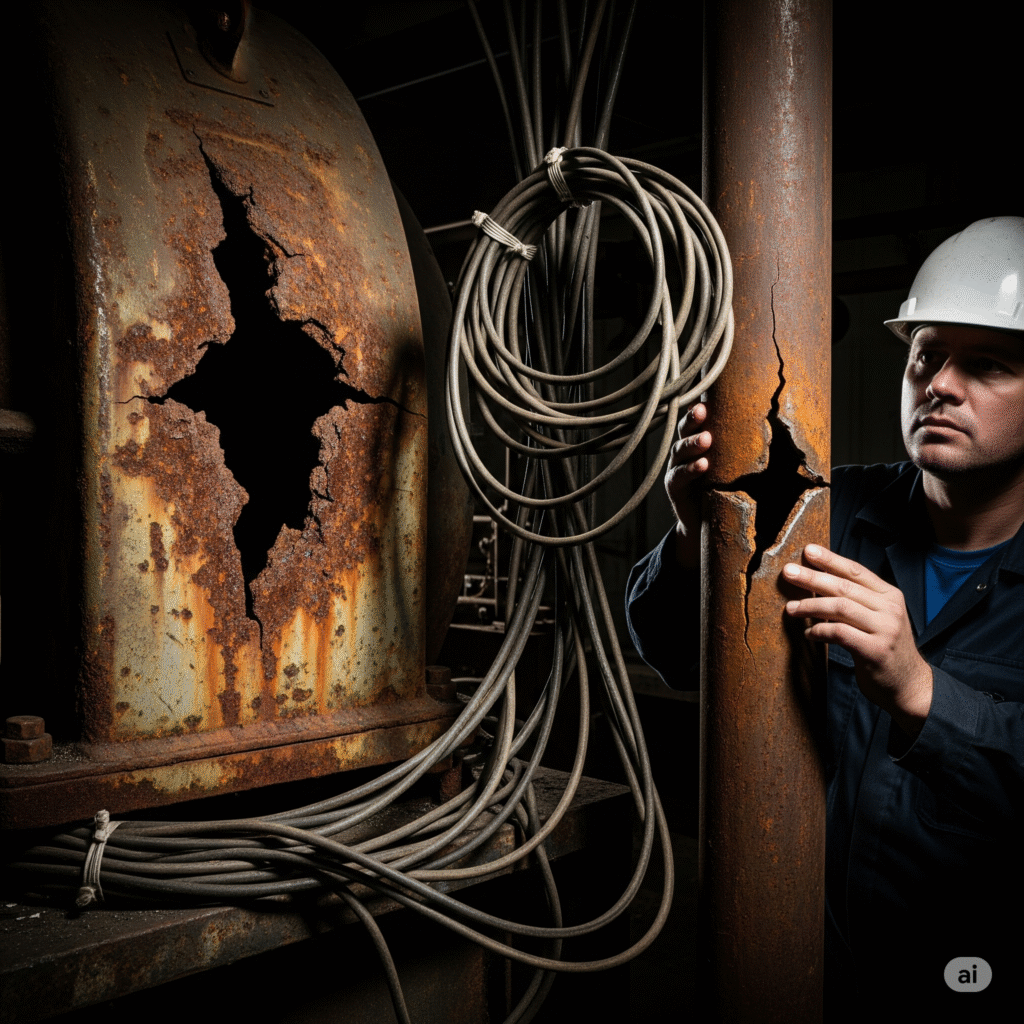Scaffolding Hazards are among the leading causes of injuries and fatalities in the construction industry. At the beginning of any scaffolding job, it’s critical to understand the risks involved and know how to mitigate them effectively.

This guide breaks down the Top 10 Common Scaffolding Hazards (and How to Avoid Them) to help ensure your team works safely at height.
1. Falls from Height
One of the most obvious and deadly scaffolding hazards is falling from height. Even low-level falls can lead to serious injuries or fatalities.
How to Avoid It:
- Always use guardrails, toe boards, and mid-rails on platforms.
- Equip workers with personal fall arrest systems (PFAS).
- Conduct regular training on fall prevention.
- Inspect harnesses and lanyards before each use.
External Resource: OSHA Fall Protection (DoFollow link)
2. Scaffold Collapse
A poorly erected or overloaded scaffold can collapse without warning, posing a catastrophic hazard to workers and anyone below.

How to Avoid It:
- Ensure qualified personnel design and erect the scaffold.
- Never exceed the scaffold’s load capacity.
- Conduct daily inspections for stability.
- Use proper base plates and mudsills on uneven ground.
Internal Link Example: See our guide on Heavy Equipment Hazards: How to Stay Safe on Site.
3. Falling Objects
Tools, materials, or debris can fall from scaffolds, endangering workers below.
How to Avoid It:
- Install toe boards, debris nets, or canopies.
- Keep platforms clear of unnecessary materials.
- Use tool lanyards to secure equipment.
External Resource: Canadian Centre for Occupational Health and Safety (CCOHS) (DoFollow link)
4. Electrocution
Scaffolds near power lines pose a severe electrocution hazard, particularly for metal scaffolding.
How to Avoid It:
- Maintain required clearance distances (typically at least 10 feet).
- De-energize or insulate power lines when possible.
- Use non-conductive scaffolding materials when necessary.
5. Slips and Trips
Wet, muddy, or cluttered scaffold platforms increase the risk of slips and trips.
How to Avoid It:
- Keep platforms clean and free of debris.
- Use slip-resistant materials or coatings.
- Ensure proper drainage on scaffold planks.
6. Weather Conditions
High winds, rain, snow, and ice can make scaffold use extremely hazardous.
How to Avoid It:
- Monitor weather forecasts daily.
- Halt work during high winds or storms.
- Remove snow and ice before accessing the scaffold.
Internal Link Example: Learn more in our post on Essential Safety Tips for the Winter to Summer Workplace Transition.
7. Improper Access
Using ladders incorrectly or climbing on scaffold frames can lead to falls.
How to Avoid It:
- Provide proper access with ladders or stair towers.
- Ensure ladders are securely fastened.
- Prohibit climbing on scaffold frames not designed for access.
8. Inadequate Training
Workers without proper scaffolding training may misuse equipment or overlook hazards.
How to Avoid It:
- Offer comprehensive, job-specific training.
- Emphasize hazard recognition and safe work practices.
- Refresh training regularly and for new hires.
External Resource: WorkSafeBC: Scaffold Safety (DoFollow link)
9. Overloading
Exceeding a scaffold’s weight capacity can cause structural failure.
How to Avoid It:
- Know the scaffold’s load rating before use.
- Factor in people, tools, and materials.
- Distribute loads evenly across platforms.
10. Inadequate Inspections
Failure to inspect scaffolding daily can allow hazards to go unnoticed until it’s too late.

How to Avoid It:
- Conduct pre-shift inspections by a competent person.
- Check for damaged components, stability issues, and proper assembly.
- Document inspections and address deficiencies immediately.
Final Thoughts on Scaffolding Hazards
Scaffolding Hazards can lead to devastating injuries or deaths if ignored. By understanding and proactively addressing these top 10 common scaffolding hazards, employers and workers can create a safer work environment for everyone on site.
Don’t leave safety to chance. Make Scaffolding Hazards prevention part of your daily routine—and protect your most valuable asset: your team.
For more safety insights, check out our full library at OHSE.ca, your trusted source for occupational health and safety resources.

No comments yet